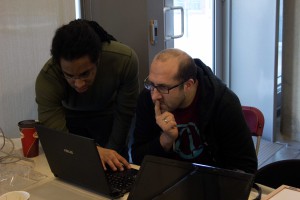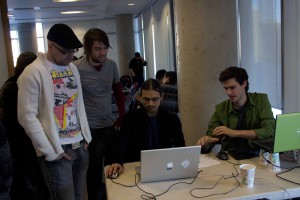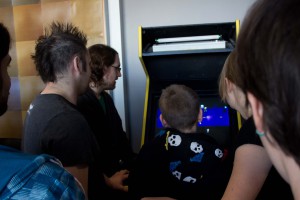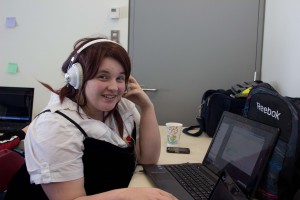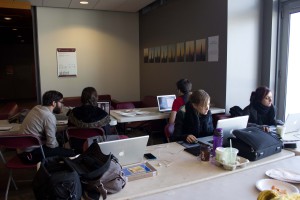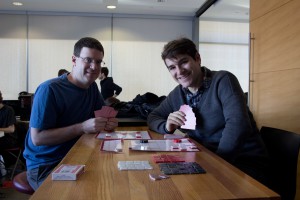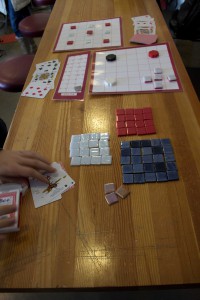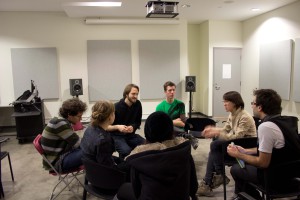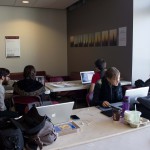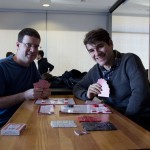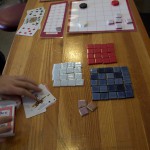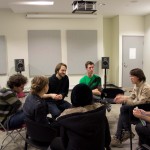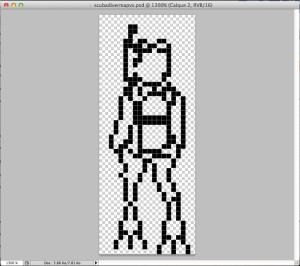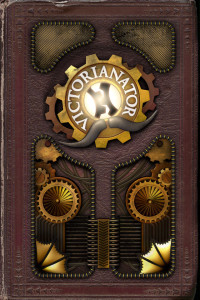Last night, Concordia welcomed media studies researcher and author Henry Jenkins to a room that was soon filled to capacity. In his opening remarks, Charles Acland (of the Screen Culture Research Group) listed some of Henry Jenkins’ (impressive) accomplishments, finishing off by reminding the crowd that Jenkins was, first and foremost, “a writer, looking to expand the vocabulary we use to describe media.”
Indeed, much of the introduction to Mr. Jenkins’ new book, Spreadable Media, is concerned with vocabulary, and these concerns were also addressed at his talk yesterday, as well as at the more intimate discussion period that he hosted today. Jenkins emphasizes that the vocabulary that we start with necessarily frames further discourse, and often determines not only how we talk about certain subjects, but even how we implement policy and make other important decisions.
A favourite example both in the talks and in the introduction is the concept of something “going viral” and the problem with the vocabulary of infection and inoculation, especially as it regards personal agency. A virus, Jenkins argues, is something that is beyond our control, whereas this is not the case with media. While it may be beyond the control of the original creator, it is the individual decision to share or not share that determines how far something like a video or an article will spread. Jenkins’ answer to this problem of a language of infection is the term Spreadable Media, which he coined while giving another talk a few years ago.
“If it doesn’t spread, it’s dead,” said Jenkins. “I thought that was kind of catchy.”
Over the next hour and during the question period, Jenkins dealt primarily with questions of spreadability on the internet and the public’s ability to shape media. Participatory culture, which is one way of describing this phenomena, is what happens as the public gains more and more access to the means of production, enabled by tools that may not always be used in the ways that they were originally intended. As Jenkins was quick to point out, “YouTube functions in participatory culture but isn’t itself a participatory culture” and the same is true of other platforms. The Occupy Movement, for example, could use YouTube to political effect, but that doesn’t mean YouTube is in the business of promoting democracy.
Given the nature of the internet, the topics of the talk were equally broad-reaching, from the Occupy Movement to Invisible Children and Kony 2012, to Mitt Romney’s Binders Full of Women, to the Harry Potter Alliance, to education and media literacy. Another quality of Jenkins’ seems to be a good deal of optimism about the future of bottom-up spreadability and what enough people getting together on the internet and offline have the power to do. About the Harry Potter Alliance, for example: Henry Jenkins’ predicts that we will be hearing more soon about Warner Bros. and the chocolate that they use for Harry Potter products, which the HPA claims is not fair-trade.
During the question period, Jenkins addressed a variety of topics, including:
Whether fans in the Harry Potter Alliance are being manipulated by “big name fan” Andrew Slack, or if he is a genuine Harry Potter fan. (The answer, by the way, is that Henry Jenkins is reasonably sure that Andrew Slack is a sincere fan).
Whether participatory culture dumbs down issues. (We tend to dig deeper about the things that we care about, but really it’s a matter of opening up discussion and raising awareness.)
How Piracy can create value for the original product (as in the case of fansubbed anime, which some might say paved the way for the Western anime market).
How games can be mobilized for social change. (Jenkins thinks that games absolutely can be tools for social change, but is wary of gamification – assigning points’ scales in order to alter people’s thinking.)
This morning, a smaller group of people who had been given the opportunity to read the introduction to Spreadable Media gathered to discuss it at the Loyola Campus. Jenkins welcomed questions and potential criticisms for about an hour and a half. Since Jenkins demonstrates such a concern about language and vocabulary, it was unsurprising to see his readers take up those concerns. Jenkins was asked about the cultural economy of neologisms and whether there is a danger of neologisms simply becoming a way of branding ideas. Jenkins admitted that the term transmedia had taken off this way, and that many places now offer job positions with “transmedia” in the title, but with a lack of clarity about what the term originally meant. When asked about his apparent avoidance of the term “ideology” in a discussion that seemed to call for it, Jenkins said that one of the goals of Spreadable Media was to reach beyond an academic audience and open up a dialogue with industries. This may account for the overall positive outlook of the book as well. He didn’t want the word ideology to “be a buzzkill.”
Amongst other topics, Jenkins discussed the potential future of print as a medium. He pointed out that the time between writing a book and having it published can be quite long: “print’s sluggishness is enormously frustrating” because certain references that were current at the time have already become obsolete, “but there’s an advantage there to the permanence of print.” Print also makes, he admitted, for slow conversation between academics. His previous book, Convergence Culture, was written in 2004 and published in 2006. There are responses to that book coming out now which were probably written in 2008 or 2009, which he may be able to respond to by 2015. However, he expects that copies of his books will be kicking around university libraries long after the associated articles have disappeared from the internet. Another problem with the digital is that it can be edited. People tend to remove things that make them look bad, as in the case brought up by TAG’s own Kalervo Sinervo about an old flame war between Penny Arcade creators and Scott McLeod.
There is a collection of free articles about spreadable media originally commissioned for the book which are now available on Henry Jenkins’ blog.


